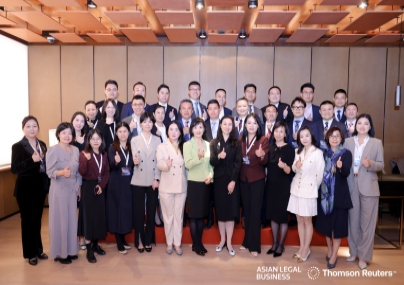Surging investment by Chinese companies in U.S. research labs is yielding a fast-growing trove of patents, part of a push to mine America for ideas to help China shift from being the world's factory floor to a driver of innovation.
Largely absent from American research hubs a decade ago, Chinese firms including Huawei Technologies and ZTE Corp are now using U.S. researchers to create patents ranging from new software to internet infrastructure, according to an analysis of Thomson Reuters' global intellectual property database.
The rapid growth in China's U.S. investments will be a key topic at economic and security talks between top U.S. and Chinese officials in Washington.
They are negotiating a bilateral investment treaty that could deepen ties between the world's two largest economies even amid tensions over China's military assertiveness.
Even without a treaty, China is pouring capital into U.S. research as well as buying other assets. While its firms are still newcomers to investing in America and few work on the technological frontier, the Thomson Reuters data offers a glimpse of the advanced economy China aspires to build.
Patented inventions by Chinese firms that involved at least one U.S. researcher roughly doubled worldwide in each of the last three years, reaching 910 in 2014.
"We have established a beachhead," said Vincent Xiang, who heads international investment at Humanwell Healthcare Group, a Chinese drug company that has put over $50 million into a New Jersey subsidiary that employs dozens of U.S. researchers.
Rather than compete with powerhouses like U.S. drug maker Merck to invent blockbuster medicines, Humanwell's U.S. researchers are making smaller refinements such as figuring out how to administer some drugs as pills rather than injections.
Humanwell's New Jersey researchers have won approval on four patents so far in the United States and European Union, Xiang said. There are advantages to setting up labs in the U.S., where there are over 800,000 people with research doctoral degrees in science, engineering, and health.
"Without access to innovation, it is hard to win in the domestic market," said Xiang.
A SMALL BUT GROWING PLAYER
And yet, direct investment between the United States and China is remarkably low considering the size of their economies, and the fruits of China's U.S. R&D are similarly modest compared with the vast quantities of patents that emerge from America every year.
The cumulative stock of foreign direct investment in China from the United States makes up just over 1 percent of the FDI sunk into Chinese businesses by all nations, according to U.S. government data. Most FDI in China comes from other Asian countries.
China's share of America's FDI stock is even smaller, but it has been growing rapidly in recent years as Beijing has eased restrictions on outward investment.
That is helping Chinese companies sink more money into a range of advanced economies. The Thomson Reuters data also shows a sharp increase in recent years in patents by Chinese firms using German and Japanese researchers."This is a change in China's economic development model," said Thilo Hanemann, who helps maintain a database on Chinese FDI at the Rhodium Group, a New York consultancy. "They want to move from an economy driven by domestic investment and exports to one driven by consumption, technology and services."
Annual flows of Chinese FDI into the United States have gone from tens or hundreds of millions of dollars per year between 2000 and 2009 to $14.3 billion in 2013 and $11.9 billion in 2014, according to Rhodium Group figures, which are widely cited because they track China's investments made via third countries such as Singapore.
That is now approaching the annual flows from America's traditional sources of FDI: advanced countries such as Germany and Canada who continue to mine much more knowledge from Americans than does China. German companies extracted 1,416 patents last year using U.S. researchers.
China already publishes more patent applications than any other country, although development economists note that its state-mandated patent targets often lead to lower quality patents, particularly those taken out only in China.
However, the Thomson Reuters data, which brings together information from patent offices in dozens of countries, points to many high quality inventions using U.S. researchers.
For example, Huawei, the top Chinese company with patents fueled by U.S. research, has a U.S. patent for processing fiber optic signals that was cited by 101 later inventions.
The recent Chinese National Patent Development Strategy highlights the country's plans through 2020, including seven strategic industries positioned for growth: biotechnology, alternative energy, clean energy vehicles, energy conservation, high-end equipment manufacturing, broadband infrastructure and high-end semiconductors.
It also includes an increase in research and development expenditures as a proportion of economic output from 1.75 percent in 2010 to 2.2 per cent this year.
One Chinese concern likely to be aired at the U.S.-China meetings this week is that Beijing feels its companies' investments are singled out in U.S. security reviews.
Huawei is a world leader in producing telecommunications equipment and has six U.S. research centers, but is a bit player in America's telecom infrastructure market. U.S. national security concerns have helped scuttle several attempts by Huawei to expand its U.S. presence.
"Huawei has occasionally found itself caught in the middle" of geopolitical tensions between Washington and Beijing, said company spokesman William Plummer.
Most Chinese FDI happens when investors snap up established U.S. companies, such as when auto parts maker Wanxiang Group bought California-based electric carmaker Fisker Automotive - and its patents - at a bankruptcy auction last year.
The Chinese are also starting new ventures and have invested $3 billion in these "greenfield" projects over the last three years, according to Rhodium.
America's state and local governments have set up dozens of offices to compete with one another to attract this capital, which could flow more freely under a U.S.-China investment treaty. Officials offer potential investors tax incentives and introduce them to potential local partners and to legal and accounting firms.
State officials understand there are no-go areas given tensions between Washington and Beijing on security matters. Washington reviews more potential investments from China for security concerns than any other country.
"China being China we don't do aerospace or defense," said Bradley Gillenwater, the Maryland state government's point person for attracting Asian investment. "But biotech is a big deal."


